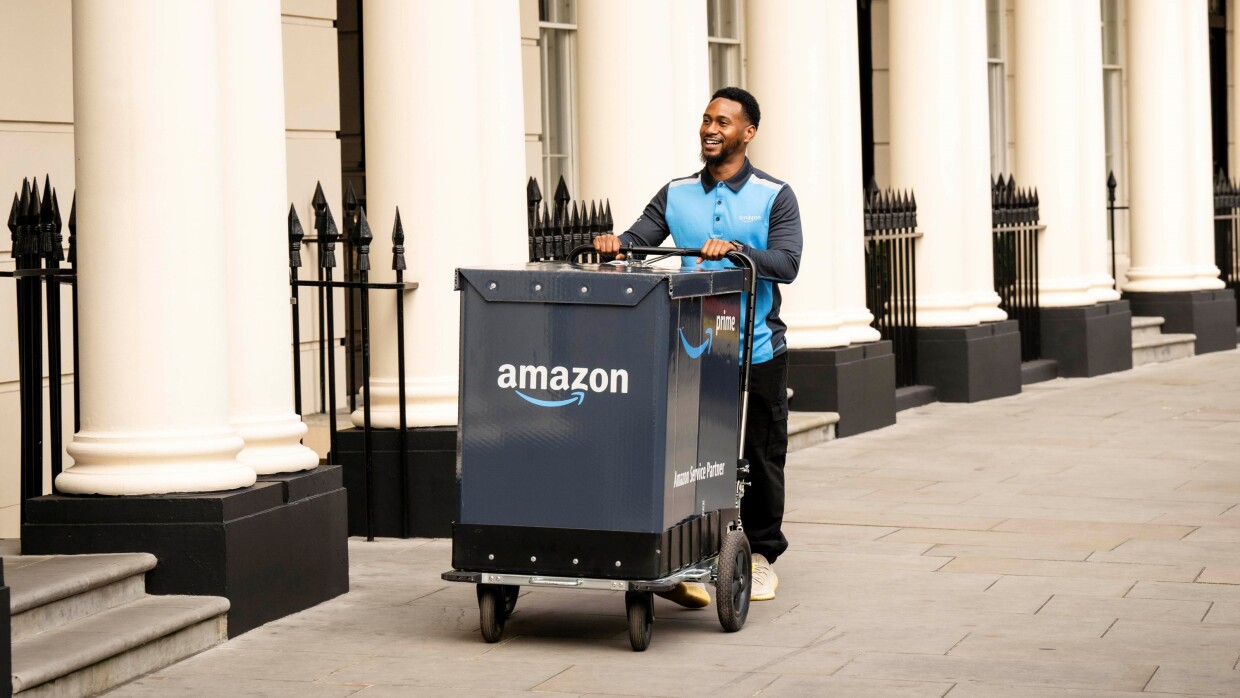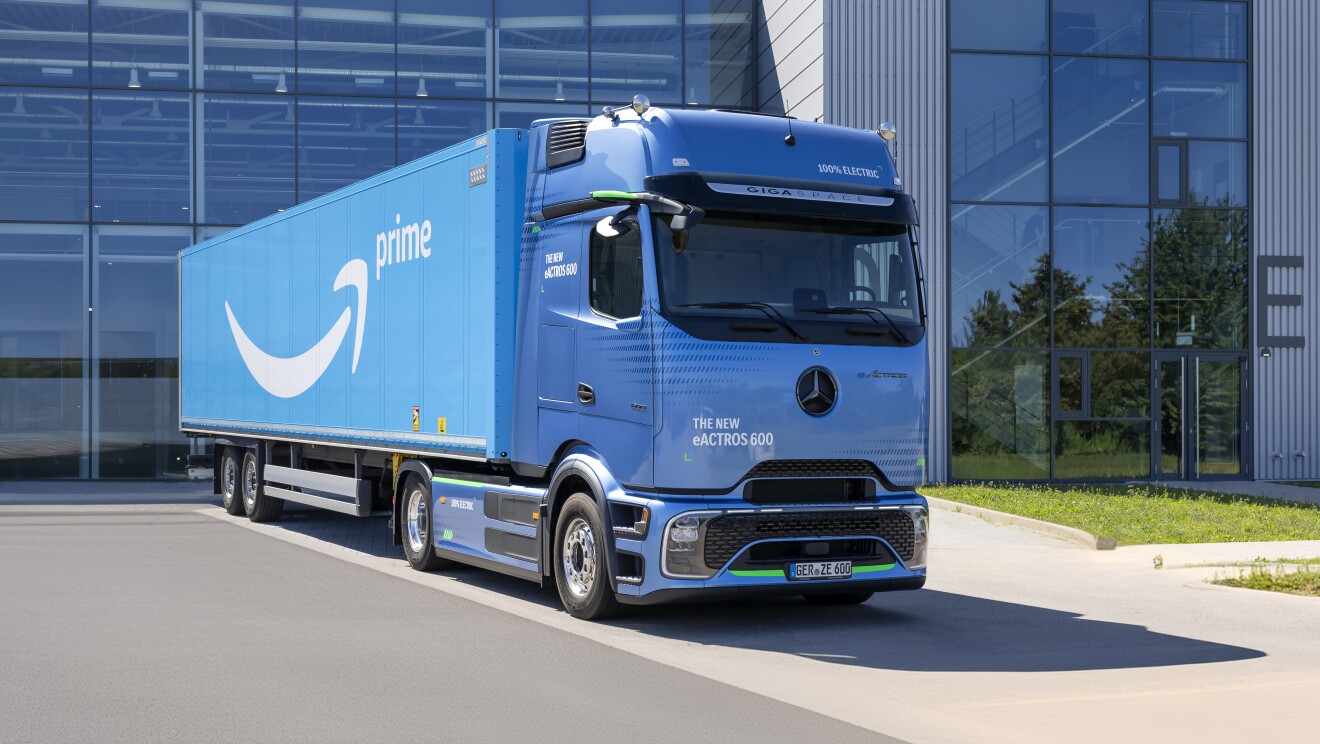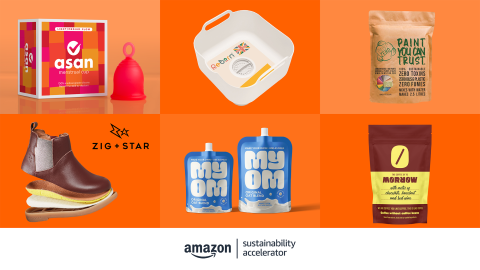As part of our commitment to sustainability, we’re working hard to deliver more customer orders with zero exhaust emissions.
Millions of Amazon packages have already been delivered to customers in more sustainable ways, including using electric cargo bikes across some of the UK’s biggest cities.
In January 2025 we took this further by putting in the UK’s largest-ever order of electric trucks (eHGVs), as well as launching our first rail deliveries across the country and on-foot deliveries in central London.
It’s all part of our work to decarbonise and electrify our transport network, which is key in helping us achieve our Climate Pledge commitment to reach net-zero carbon emissions across our operations by 2040.
Expanding zero-exhaust emission deliveries with the UK’s largest-ever order of electric trucks
In January 2025, we announced more than 140 new electric Mercedes-Benz Truck eActros 600 trucks and eight Volvo FM Battery Electric trucks are joining Amazon’s transport network over the next 18 months as part of the UK’s largest-ever electric heavy vehicles (eHGV) order.

Once fully operational, these new eHGVs are expected to transport more than 300 million packages each year with no exhaust emissions. The new electric trucks will haul trailers with products and packages to and from our fulfilment centres, sort centres and delivery stations to customer doorsteps.
To support the expanded fleet, Amazon will install additional fast charging infrastructure across key UK sites, including 360kW electric charging points capable of charging the 40-tonne Mercedes-Benz trucks from 20 to 80 per cent in just over an hour. The new electric trucks will have a range of 310 miles (500km) on full charge.
Utilising the UK’s electric rail network for customer deliveries
For the first time in the UK, Amazon has launched rail deliveries at scale.
Products will be loaded onto train carriages on the fully electric West Coast Main Line, which runs between Scotland and the Midlands. The products are then picked from stations close to local Amazon delivery and fulfilment centres – ready for sorting and packing ahead of customer deliveries.

More than 20 million products sold on Amazon are expected to travel on the UK’s electric rail network in 2025, avoiding traffic congestion and carbon emissions, with plans to expand across further rail routes before the end of the year.
Making deliveries more sustainable through micromobility hubs and electric cargo bikes
Micromobility hubs are physical centres within urban areas where packages are sorted before the final leg of their journey. They are usually located within delivery stations, which represent the last mile of Amazon’s order process.
Normally, packages arrive at these stations from nearby Amazon fulfilment centres before being loaded onto electric cargo bikes and transported to your doorstep. Micromobility hubs take delivery vans off city centre roads and help to improve air quality and alleviate congestion on city roads.

Amazon has been continuously expanding electric deliveries across UK city centres, with recent micromobility hub launches in Belfast and Norwich joining existing hubs in London, Manchester and Glasgow.
Since 2022, Amazon has made more than 150 million deliveries using electric vans and cargo bikes in the UK, with many more planned over the coming years.
Underpinning these innovations is a £300 million investment in the UK to help decarbonise our transport network. The investment will also encourage the development of public charging infrastructure, which will be key to helping the transport sector reduce carbon emissions over the coming years.
Launching on-foot deliveries in central London
Customers in central London can now receive their orders through on-foot deliveries, brought to doorsteps with the help of carts that can be restocked on-the-go from vans dotted around the capital.

Developed in partnership with the London Boroughs of Westminster and Islington, these new deliveries will help Amazon make more zero-exhaust emission deliveries than ever before, with fewer motorised van trips.
More than 70% of London’s Congestion Charge zone is now covered by electric vans, e-cargo bikes and on-foot deliveries operated by Amazon’s partners.
Find out more about the latest Sustainability news at Amazon.












